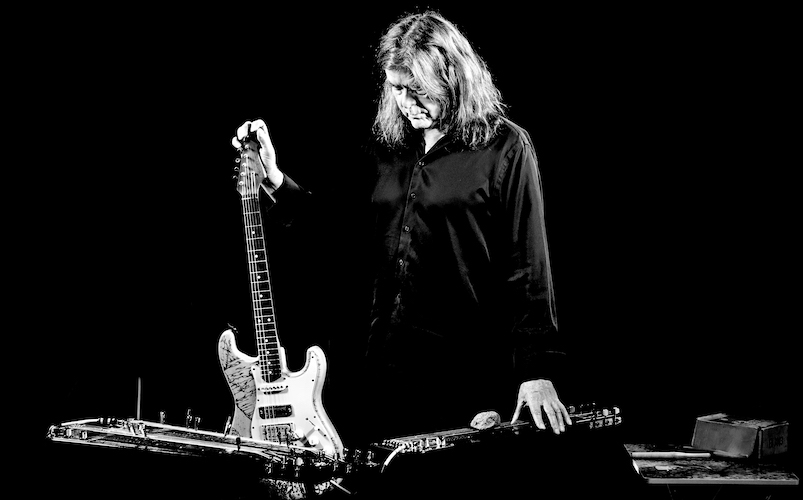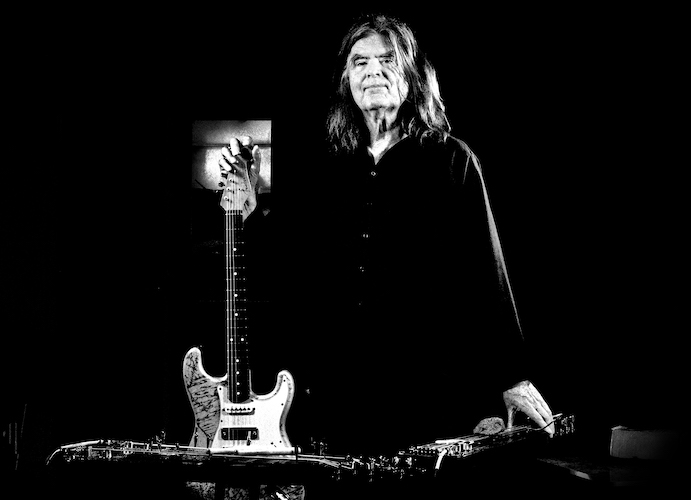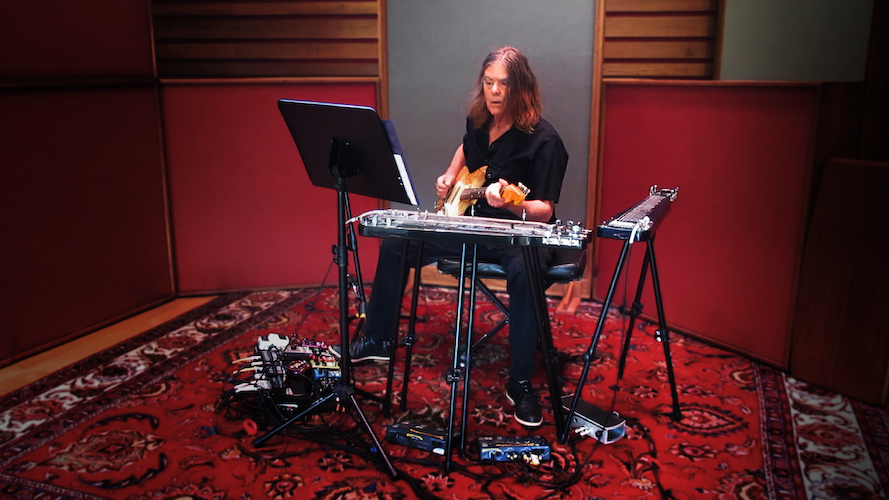ROGER CLARK MILLER
New York Times: "Miller is doing for the electric piano what Hendrix did for the guitar, creating a new vocabulary of electronic noises... but Mr. Miller's songs have jolts in all the right places."
Boston Globe: "Less a recital than a musical minefield... Miller is a man in constant motion, a one-man symphony."
LA Weekly: "A 21st Century mind trapped in a 20th Century body, Miller's white light/white heat 88s were like a cross between John Cale, Jimi Hendrix and John Cage."
Roger Miller is a guitarist, pianist, composer, bassist, singer, percussionist and occasional cornet player. He has been a band leader since 1967. His recordings have appeared on Cuneiform, Matador, Fire, Ace of Hearts, SST, New Alliance, Forced Exposure, Feeding Tube, World in Sound, Atavistic, Sublingual and Fun World. He has toured nationally since 1979 and internationally since 1998. His career officially began in 1979 when he co- founded the influential post-punk band
Mission of Burma on guitar and vocals. They have a chapter in the bible of indie rock history “
Our Band Could be Your Life”, and their documentary “
Not a Photograph” was listed in Huffington Post's 18 must-watch documentaries. They folded in 1983 due to his tinnitus. He formed
Birdsongs of the Mesozoic on piano in 1981 and continued in it until 1988. The group blended minimalism, classical, and rock. From 1983-1989 he created his
Maximum Electric Piano work, utilizing prepared piano and loops. From 1989 until 1998 he released numerous records as leader, all quite different from each other, on guitar or keyboards. In 1998 he joined the silent film accompanying ensemble
Alloy Orchestra on keyboards which continues to the present under the new name
The Anvil Orchestra. Roger Ebert said “Alloy Orchestra is the best in the world at accompanying silent film”. From 2002-2015 Mission of Burma reformed to high acclaim, and Roger split his touring time between Burma and Alloy. During this time he composed many soundtracks for documentary films, four which premiered at Sundance. In 2010 he began composing chamber music again and his compositions have been performed at the New England Conservatory, Tufts University and elsewhere, continuing to the present. His art installation, "
Transmuting the Prosaic", showed at the Brattleboro Art Museum in 2020 and 3S Artspace in Portsmouth, NH, in 2022. He continues working in multiple formats, and plans to do so into the far distant future.
 CURIOSITY FOR SOLO ELECTRIC GUITAR ENSEMBLE
Rune 543 |
Roger C. Miller : Custom Stratocaster 6-string; three Rogue lap-steels (on legs), two prepared, one tuned unison E; multiple foot-pedals/sound-altering devices; Boomerang III Looper.
There are four Dream Interpretations on this album, structured by dreams from his dream journal. This round of Dream Interpretations, while still numbered in the order they were composed, are given titles, the same titles the dreams were in fact named in Miller's dream journal. New techniques have developed since the previous album, and the Lap-steels are used more extensively.
There is also “Curiosity on Mars”, a longer composition which partakes of Miller's “Natural Phenomena” composing technique for generating structure/form. Five photographs taken by NASA's Mars Rover “Curiosity” are used to organize the five sections of the piece. Occasionally the music is impressionistic, but mostly the music follows the specific arrangement and shapes of rocks and minerals in the photographs.
Miller has performed his “Solo Electric Guitar Ensemble” music from Toronto to Washington, DC. It is performed on multiple guitars with multiple loops and devices. While the sounds produced are sometimes dizzying, they are always physical and made in real time. In performance, Miller sits in his cockpit, able to reach all four guitars and a plethora of pedals from one position. It requires intense concentration to play these compositions, but they could not have occurred any other way.
Curiosity for Solo Electric Guitar Ensemble press release
|
|
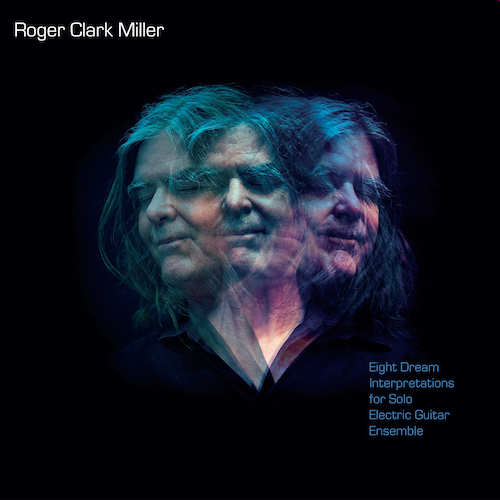 EIGHT DREAM INTERPRETATONS FOR SOLO ELECTRIC GUITAR ENSEMBLE
RUNE 493
EIGHT DREAM INTERPRETATONS FOR SOLO ELECTRIC GUITAR ENSEMBLE
RUNE 493 |
Miller's active involvement with loops began in 1979 when he asked Martin Swope to apply live multi-tracked tape looping to his Mission of Burma song "New Disco." Time got bent inside-out, transformed. Who knows who was doing what, or even when they did it? Looping is pivotal to his current record.
In the fall of 1983, after Mission of Burma folded the first time, he discovered the Electro-Harmonix 16-second Digital Delay which was an early innovative looping device. He applied this unit, along with guitar effects and prepared piano techniques, to his Yamaha CP-70 electric baby grand piano which had strings and electronic pick-ups. The concerts played in this set-up were solo, but with the variously layered loops sounded like an ensemble.
When he began conceptualizing his "Dream Interpretations for Solo Electric Guitar Ensemble" in 2018, that previous set-up was the model. He now uses three lap-steel guitars on stands, two of them loaded with alligator clips or bolts, the other to a post-Glenn Branca full unison E. Using bass and tenor guitar strings, his previous prepared piano ideas fit into more portable guitars, resulting in percussive grooves, bass-lines, and similarities to the Chinese Ch'in. Looping technology has advanced considerably since 1983, and the new Boomerang III Looper presents much greater options for composing, layering, and altering sounds. Combined with new guitar stomp-boxes, many in stereo, the sound palette is enveloping.
To contextualize his interest in these sounds, Miller turned to the Dream Interpretation technique he developed in 1975. By tightly following and translating a specific dream into music, a new type of structure was available: organic and personal, yet universal. Once he gave in to the essentially surrealistic/psychedelic nature of dreams, the type of guitar sounds he was interested in now had an appropriate context. Dream logic is not day-to-day logic, and the music follows this deeper unconscious thread.
While the sounds produced are sometimes dizzying, they are always physical and made in real time. In performance, Miller sits in his cockpit, able to reach all four guitars and a plethora of pedals from one position. It requires intense concentration to play these compositions, but they could not have occurred any other way.
The vocabulary for electric guitars now has a new front. And here it is:
"Eight Dream Interpretations for Solo Electric Guitar Ensemble."
Eight Dream Interpretations for Solo Electric Guitar Ensemble press release
|
|
MEDIA


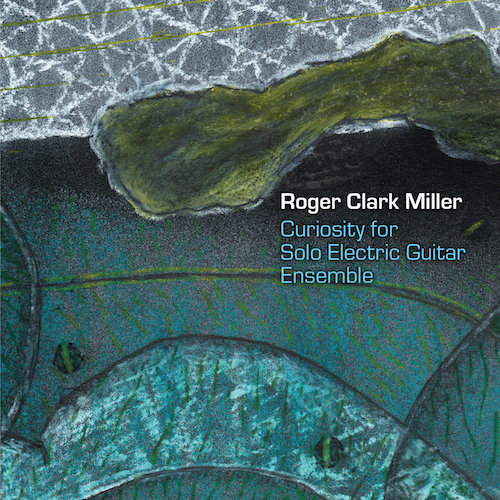
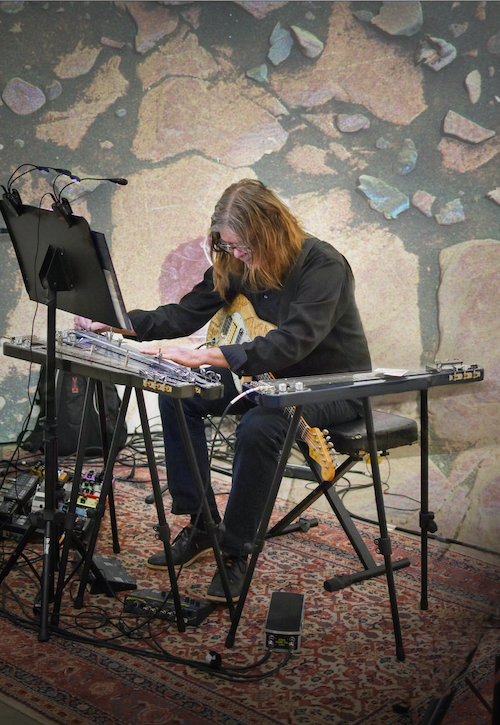
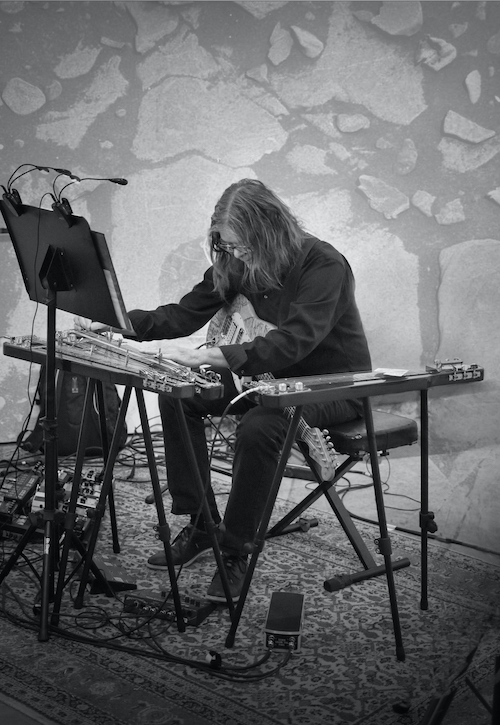 EIGHT DREAM INTERPRETATONS FOR SOLO ELECTRIC GUITAR ENSEMBLE
EIGHT DREAM INTERPRETATONS FOR SOLO ELECTRIC GUITAR ENSEMBLE
